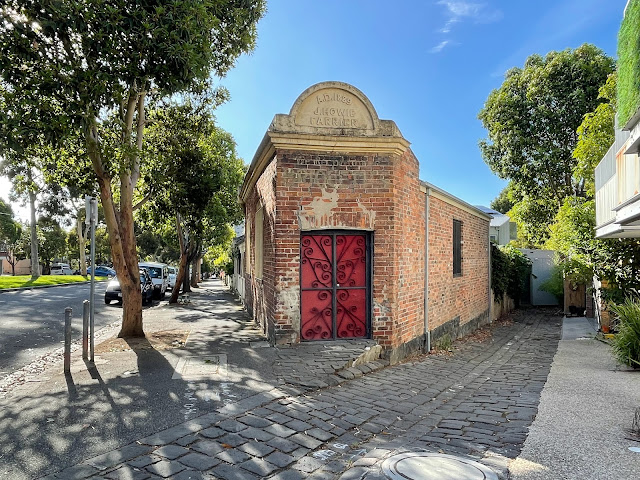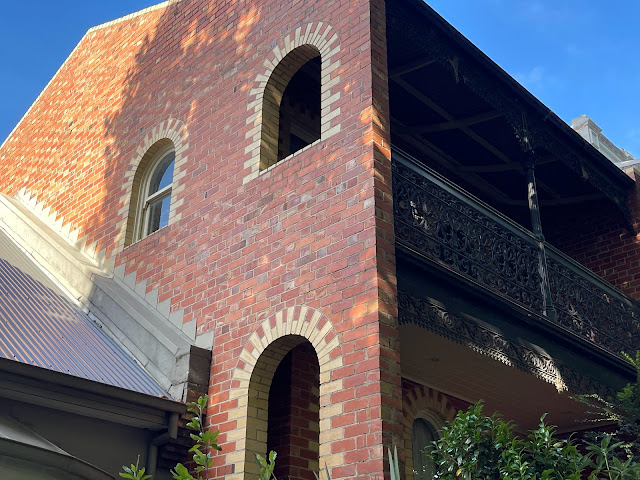There's not much to say about Dryburgh Street (you'll be sorry to hear, as you presumably relished this as a topic). I have found lately that, of the local area, it is the only street that for some strange reason does not bore me to tears as a prospect when I come to consider where to wander with Perry. I mean I am much more likely to want to drive somewhere, or take a train, and walk than to just set off out the door. I know that's a bit pathetic but I also know my own tolerance to the relentlessly familiar, and also, how much I enjoy the unfamiliar.
I do sort of like this building, J. Howie Farrier, though I am more interested in the very faded Briquettes ad on the building. This ad from the Age for 16 August 1894 (p. 2) is interesting mainly because of the listed address:
I mean was this building once in Flemington Road? Because now it's here:
By the way, if Howie (as opposed to his estate or a relative or a company with his name) built this building in 1889, he didn't have long to enjoy it - he was dead by 1900 when his wife Mary's funeral notice was published in the Age (7 December, p. 1). She was 72.
What are these side windows on verandahs in two-storey terraces called? What interests me particularly about them is they seem only to be installed only when there is no chance of another two storey terrace adding to the row being built next door, i.e. no-one ever made an ambit claim that the single-storey cottage next door would always be a single-storey cottage. So, they're almost only ever seen on corners.
Even then, sometimes people change their minds:












No comments:
Post a Comment